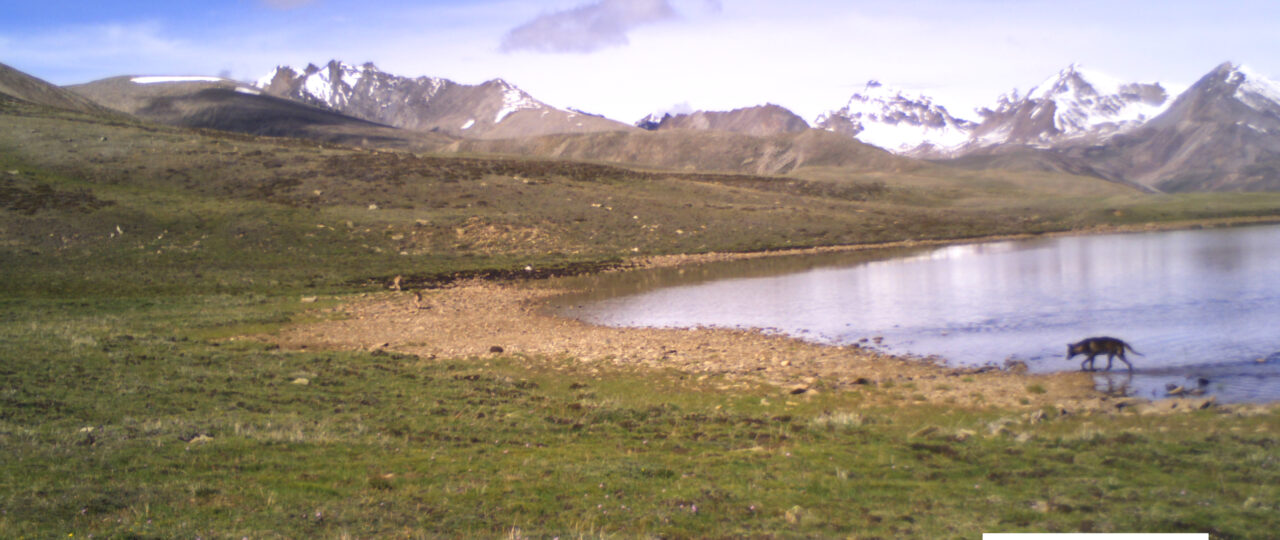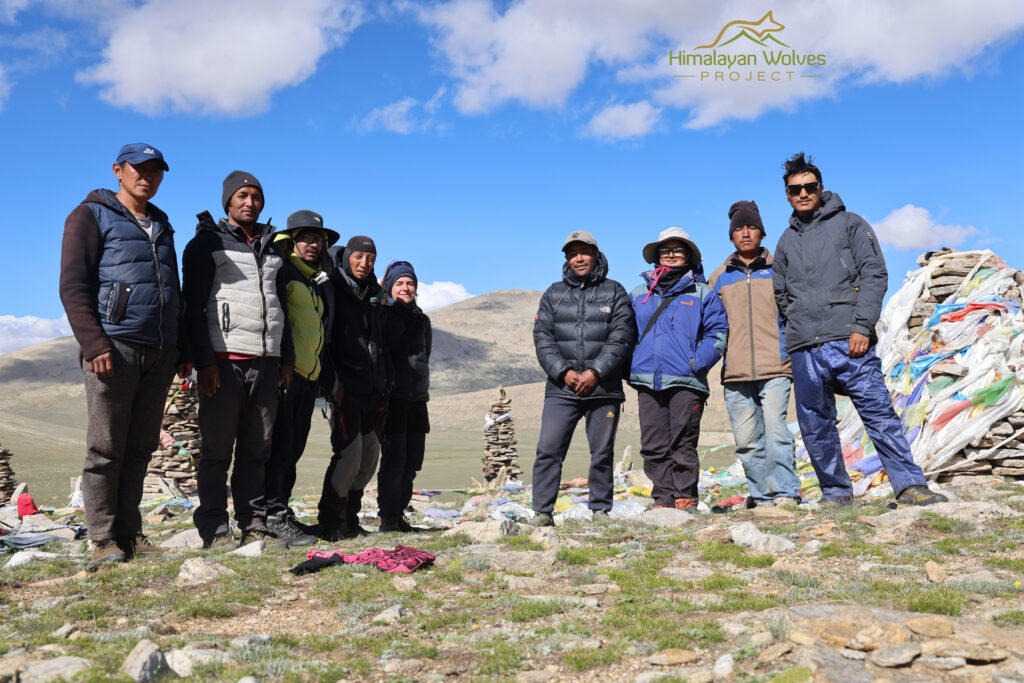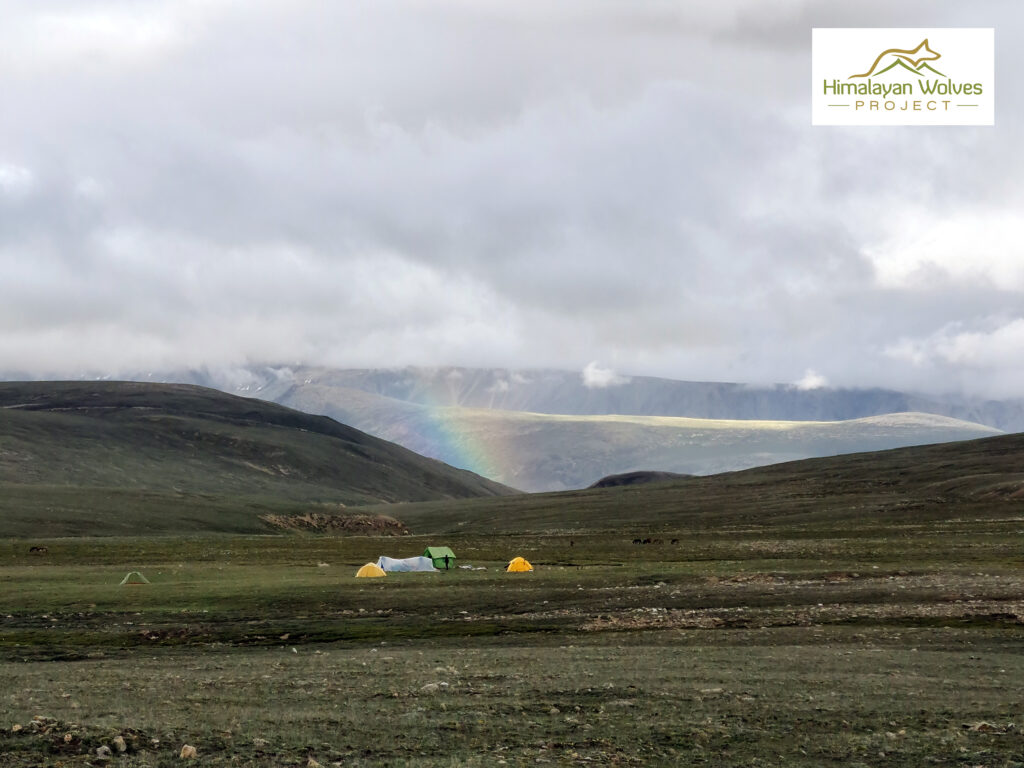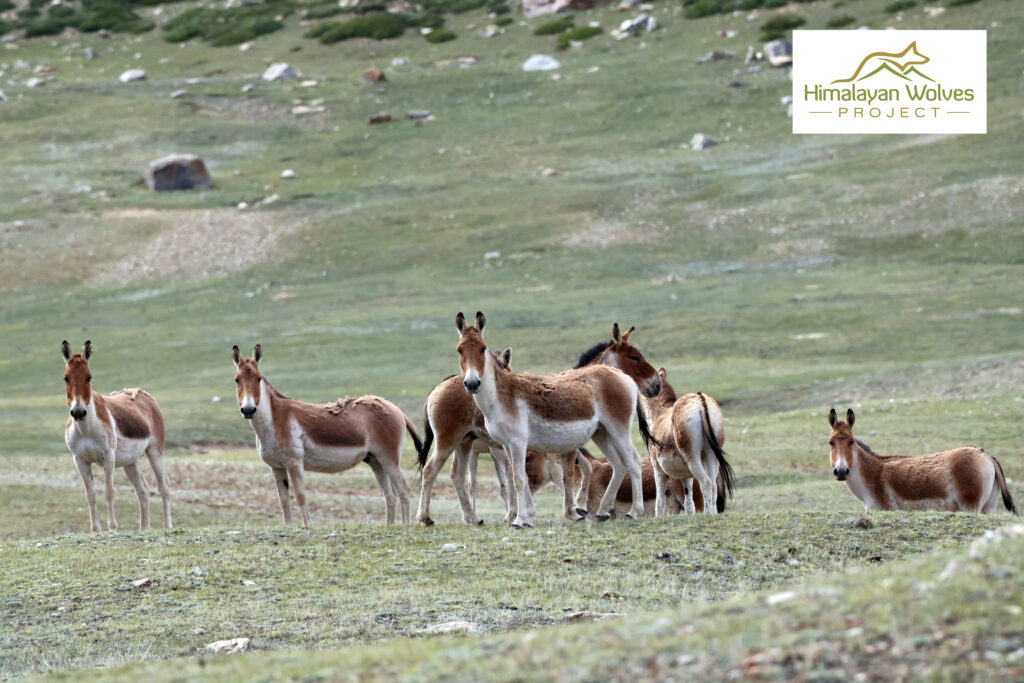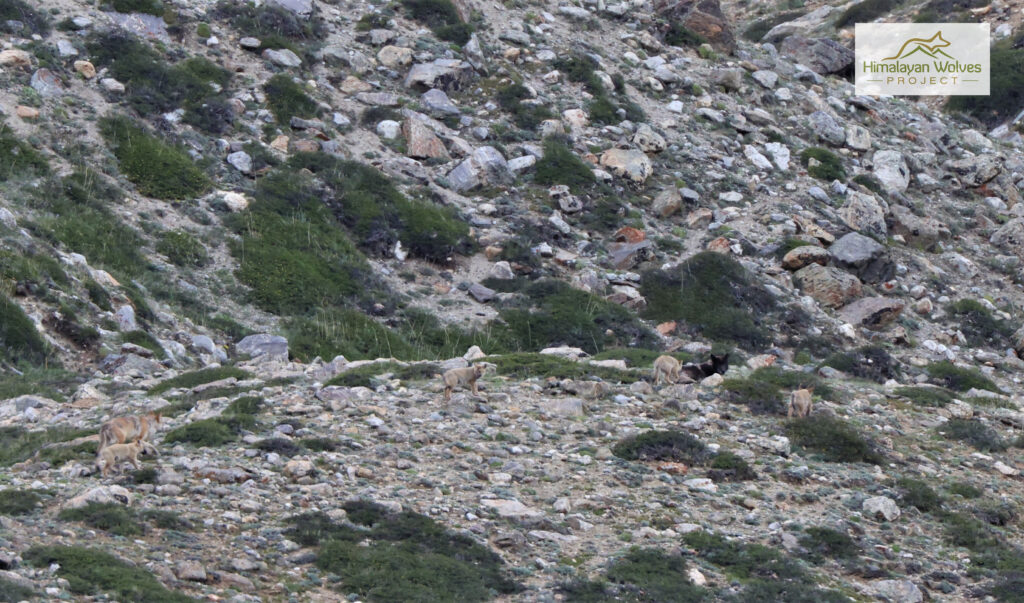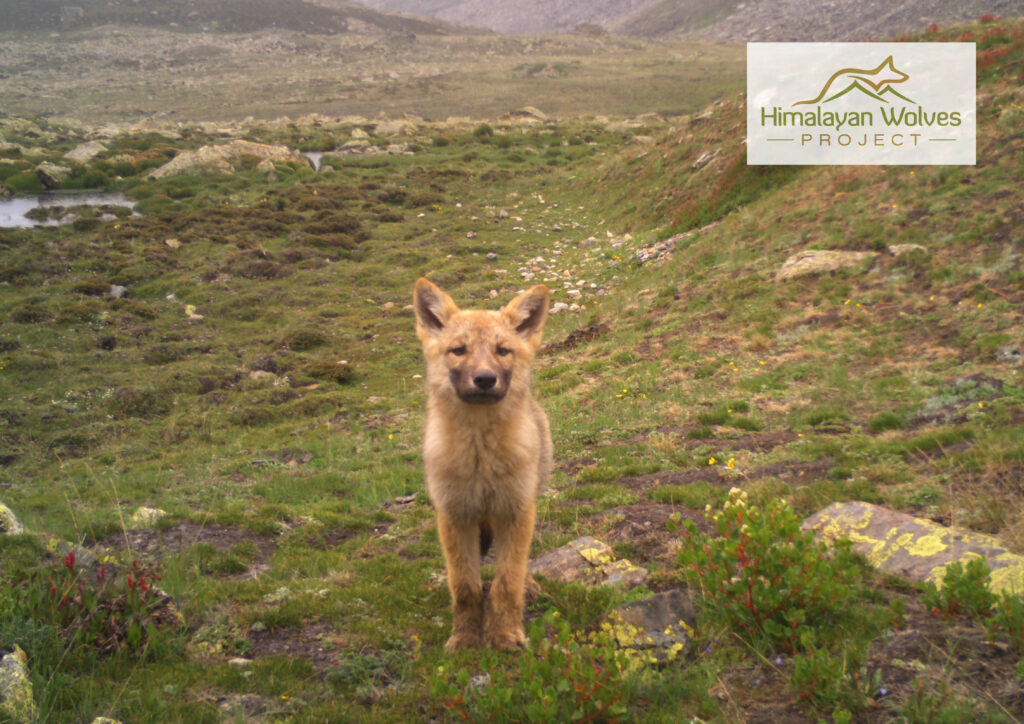Highlights of the Field Expedition 2021
The Himalayan Wolves Project team has recently returned from a successful field expedition to Upper Humla Nepal 2021. The team has kicked off a three-year project phase that includes science and conservation action in close collaboration with local communities. For our scientific work we continue to monitor Himalayan wolves with genetic sampling of their scats . In addition, we use camera traps to explore if non-invasive genetic sampling or camera trapping is a more effective method for the long-term monitoring of the Himalayan wolf population in the harsh high-altitude Himalayan habitats. And we continue our monitoring of ungulate and small mammal populations. Highlights of our field expedition were that we documented two packs of Himalayan wolves, one with confirmed pups. For the first time we documented a Eurasian lynx through camera trapping. Local people had reported lynx to be found there in the past but no recent sightings. Following our previous documentations of wild yaks, this year we had a close-up moment with a wild yak in a herd of domestic yaks it had brought along from Tibet. We were also very happy to find a healthy population of Kiang and Tibetan gazelle as well as many Himalayan marmots and Woolly hare. The wild ungulate populations in these landscapes fluctuate with winter conditions and seasonally compete with livestock for resources.
Local people keep less livestock these days due to alternative sources of income and the livestock present in wolf habitat is herded with better vigilance. This trend of less livestock combined with healthy prey populations facilitates a positive coexistence of humans and wolves. As a result, no conflict with wolves has been reported by local people this year. This finding was vividly illustrated by our observation of a wolf pack with seven pups thriving in the pasturelands less than a kilometre away from a livestock herd with 75 female yaks and their young without any depredation conflict. This is a wonderful development and illustrates the importance of healthy wild prey populations to encourage a positive human-wolf coexistence. To get a more detailed understanding of what the wolves eat we are conducting a genetic diet analysis with the method developed and tested by the WildGenes laboratory of Royal Zoological Society of Scotland (RZSS).
For the conservation actions we are conducting diverse activities with local communities from improving infrastructure to keep livestock safe, to forming community conservation groups, to running educational workshops, and distributing our educative animal book titled “The Web of Life- A TransHimalayan Animal Adventure”.
Our first sight was a black wolf roaming the valley when we reached our study location during this year’s research expedition after six days of walking up the mountains! Later that day we realized that this black wolf belongs to a pack of Himalayan wolves with at least four adults and seven pups all residing at the rocky hillslope opposite of where we set our camp. What a lucky start to this expedition. The wolves in these regions, especially the whitish light brown ones, are very well camouflaged in the similarly colored rock land they inhabit. The pups of this pack are already a few weeks old and very playful. But although we know the pack is in the area (we hear them howling at specific times of the day), we only see the pups briefly now and then. They are often hidden from our view by some big stones or small undulations and ridgelines in the landscape. But this is good. Wolves must be this elusive to survive, and their wariness of humans is an essential ingredient to their survival success.
The wolves navigate their high-altitude homes with ease. They cover large distances, trot up steep hillslopes, climb over big boulder fields, and swim across rivers on a daily basis. Wild prey comprising Kiang, Tibetan gazelle, Blue sheep, Himalayan marmot, and Woolly hare is very abundant this year. The last winter was mild. In these lush summer weeks, even the adult wolves are very playful. It’s a time of abundance, offspring is everywhere, and the vegetation is in full flush. Wolf life is good.
We even see a Kiang foal being born and get to observe a herd of Kiang females with their new-borns for a few precious moments. The herd of Kiang mothers are very wary of any danger in these delicate first moments of their foal’s life and are quick to leave the valley upon any disturbance. Meanwhile, other members of the Kiang population are busy with mating to ensure that Kiang foals will be born next year too. And we get a glimpse of another elusive canid characteristic to these high altitude ecosystems, a Tibetan fox runs away in the distance.
The wolf pups are only a few weeks old, but the wolf pack is already surprisingly mobile covering larger distances. We find the packs’ traces everywhere we go as our team travels the landscape like a pack of wolves. We change camp every few days to set up camera traps, check batteries, and count prey populations. In the process, our team of humans and equids becomes tight-knit, and we start to get an intimate understanding of the landscape and its wild inhabitants. We treasure each glimpse into the wolves’ movement and routines. This year less livestock is herded in the high-altitude pasturelands. The wolves seem to benefit. There is less encroachment into their habitat by humans and livestock and less potential for depredation conflict. And when the livestock herds do appear in the high-altitude valleys for a few weeks in the summer, the wolf pack with the pups continues to go about its business, pursuing and killing wild prey, and elusively navigating the valleys now shared with a few dozen herders and a couple hundred yaks and jhoppas (yak-cow hybrid). But the wolves are always very wary and avoid anything related to humans. Our team returns from this field expedition excited and motivated by the glimpses into the wild animals’ lives and the vivid experience of peaceful human-wolf coexistence.
And lastly we have recorded a new small mammal species for Upper Humla during this expedition. Stay tuned as we prepare to unfold the new finding through a scientific publication.
